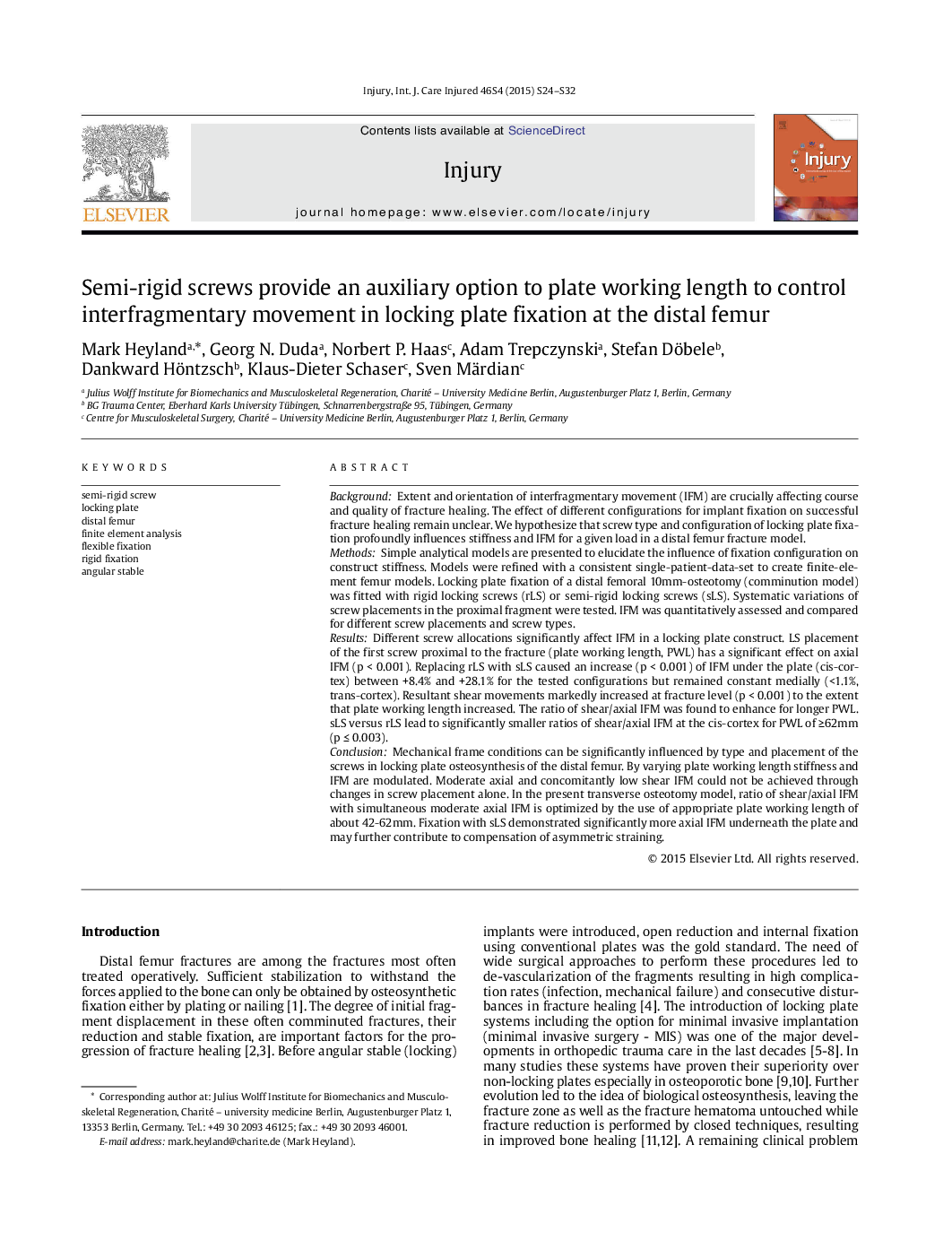| کد مقاله | کد نشریه | سال انتشار | مقاله انگلیسی | نسخه تمام متن |
|---|---|---|---|---|
| 3239348 | 1205998 | 2015 | 9 صفحه PDF | دانلود رایگان |
BackgroundExtent and orientation of interfragmentary movement (IFM) are crucially affecting course and quality of fracture healing. The effect of different configurations for implant fixation on successful fracture healing remain unclear. We hypothesize that screw type and configuration of locking plate fixation profoundly influences stiffness and IFM for a given load in a distal femur fracture model.MethodsSimple analytical models are presented to elucidate the influence of fixation configuration on construct stiffness. Models were refined with a consistent single-patient-data-set to create finite-element femur models. Locking plate fixation of a distal femoral 10mm-osteotomy (comminution model) was fitted with rigid locking screws (rLS) or semi-rigid locking screws (sLS). Systematic variations of screw placements in the proximal fragment were tested. IFM was quantitatively assessed and compared for different screw placements and screw types.ResultsDifferent screw allocations significantly affect IFM in a locking plate construct. LS placement of the first screw proximal to the fracture (plate working length, PWL) has a significant effect on axial IFM (p < 0.001). Replacing rLS with sLS caused an increase (p < 0.001) of IFM under the plate (cis-cortex) between +8.4% and +28.1% for the tested configurations but remained constant medially (<1.1%, trans-cortex). Resultant shear movements markedly increased at fracture level (p < 0.001) to the extent that plate working length increased. The ratio of shear/axial IFM was found to enhance for longer PWL. sLS versus rLS lead to significantly smaller ratios of shear/axial IFM at the cis-cortex for PWL of ≥62mm (p ≤ 0.003).ConclusionMechanical frame conditions can be significantly influenced by type and placement of the screws in locking plate osteosynthesis of the distal femur. By varying plate working length stiffness and IFM are modulated. Moderate axial and concomitantly low shear IFM could not be achieved through changes in screw placement alone. In the present transverse osteotomy model, ratio of shear/axial IFM with simultaneous moderate axial IFM is optimized by the use of appropriate plate working length of about 42–62mm. Fixation with sLS demonstrated significantly more axial IFM underneath the plate and may further contribute to compensation of asymmetric straining.
Journal: Injury - Volume 46, Supplement 4, October 2015, Pages S24–S32
